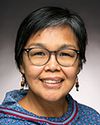Thank you.
I'm very honoured to appear before the committee today from my home in Oxford County, which is on traditional Anishinabe and Neutral territory, covered by the Upper Canada treaties. By taking the time to acknowledge the land that I stand on, I remind myself of the long history of silencing in this country and the need to speak the truth on a journey towards reconciliation.
Your current study on Arctic sovereignty, security and emergency preparedness of indigenous peoples covers a lot of terrain that is near and dear to my heart. I'm going to touch on a few topics in my opening statement.
In terms of Arctic security writ large, the framework that I typically employ to conceptualize Arctic threats is one that differentiates between threats that pass through the Arctic, threats to the Arctic itself and then threats originating in our Arctic.
I want to focus my opening statements on threats in the Canadian north, most of which I see as related to our ability to respond to humanitarian and environmental emergencies caused or exacerbated by climate change: from tundra fires and wildfires to melting permafrost and coastal erosion to flooding and landslides, as well as risks amplified by heightened human activity in the north, such as pollution and spills, or maritime and air disasters.
My team adopts an all-hazards approach to identifying measures to anticipate, mitigate and respond to risks in remote communities and austere environments. Our focus is on how we can improve whole-of-government and intergovernmental responses and work towards more holistic whole-of-society approaches to build resilience and enhance emergency management.
Canadian Rangers are an example of a community-based capability within the Canadian Armed Forces, who provide important grassroots local responses across the spectrum of risk. In full disclosure, I am honorary lieutenant-colonel of the 1st Canadian Ranger Patrol Group, which spans our three northern territories. I am a huge proponent and promoter of the Canadian Rangers. I see the Rangers as a distinctly Canadian military solution that embraces northerners and indigenous peoples as the heart of what's needed to encourage and leverage subject matter expertise, capabilities and local relationships in ways that are attuned to both community and national needs.
The Rangers serve as the eyes, ears and voice of the Canadian Armed Forces in remote regions. They guide southern-based soldiers who deploy to our north. Due to their presence and capabilities, Canadian Rangers regularly support other government agencies in preparing for, responding to and recovering from a broad spectrum of local emergency and disaster scenarios.
Over the last couple of years, Rangers were a key component of Operation Laser—which, of course, was the military's response to COVID-19 in isolated communities—while continuing their established roles in responding to heavy flooding in places like Lake Vermilion, Hay River and Kashechewan. They evacuated communities threatened by forest fires, responded to plane crashes and supported ground search and rescue.
We should note that residents of Canada's remote regions, and particularly indigenous peoples in our north, already serve in the military in very high numbers per capita, as Canadian Rangers.
One straightforward way of bolstering emergency management in remote communities is to improve the coordination between the Rangers and other first responder organizations, such as the Canadian Coast Guard Auxiliary, volunteer search and rescue organizations, indigenous guardians programs and volunteer firefighters. Relationships are key.
Better horizontal and vertical coordination of the diverse array of actors involved in security, disaster and emergency management means embracing a multisectoral approach, changing how we talk and working together across jurisdictional boundaries before, during and after emergencies.
I echo previous witnesses before the committee when I call for greater clarity about who is responsible for what aspects of emergency management, what capabilities exist at local and regional levels, how these capabilities might be better integrated and coordinated, and where there are gaps in our processes that must be addressed.
We have positive examples of successful communities of practice, like the Arctic security working group, co-chaired by Joint Task Force North and the territories, which works well at a pan-territorial regional level.
We still face major challenges in information sharing between departments, agencies and governments, and with local actors. This inter-agency and interasset information sharing and coordination was a major theme and recommendation of the Newfoundland and Labrador Public Inquiry Respecting Ground Search and Rescue for Lost and Missing Persons, led by Commissioner James Igloliorte of Labrador.
In my view, improved information is a key opportunity space that can be acted upon immediately. This requires a cultural change in how federal actors think about their role in not just ingesting relevant information for federal purposes but also providing information to first responders at the speed of relevance.
One possible initiative that could help to synchronize different lines of effort would be implementing an Inuit Nunangat community public safety officer program, which Calvin Pederson, who you're going to hear from next Tuesday, our colleague Dr. Peter Kikkert and I have proposed. This would provide communities with officers responsible for search and rescue, all-hazards emergency management, fire prevention, land and marine safety, and emergency medical assistance, all integrated under one hat. I'd be pleased to discuss this in more detail in questions and answers if you wish.
Finally, I see important opportunities related to strategic infrastructure investments that align defence and security needs with the well-established priorities of territorial, provincial and indigenous governments. Priority areas include communications, both broadband and satellite; improvements to airfields; port and harbour facilities; and sensor systems that enhance our domain awareness in both the environmental and human dimensions. Also, addressing infrastructure deficits in the north that create vulnerabilities in the security sphere should be synchronized wherever possible to also address persistent social, health and economic inequities in the region.
To wrap up, relationships are key. Indigenous peoples and northerners are key to local solutions to meet evolving human and environmental security threats in the north, and we need to better share information in anticipation of emergencies, during emergencies and in discerning lessons afterwards. All of this is contingent on more fully adopting whole-of-government and whole-of-society approaches to emergency management, which will bolster resilience, security and sovereignty.
When we come up with a sober appraisal of the security situation in the Canadian Arctic, I hope that we will align smart investments in Arctic defence and security with civilian priorities and assure that they provide multi-use or military and civilian benefits wherever possible.
Thank you. Qujannamiik.





